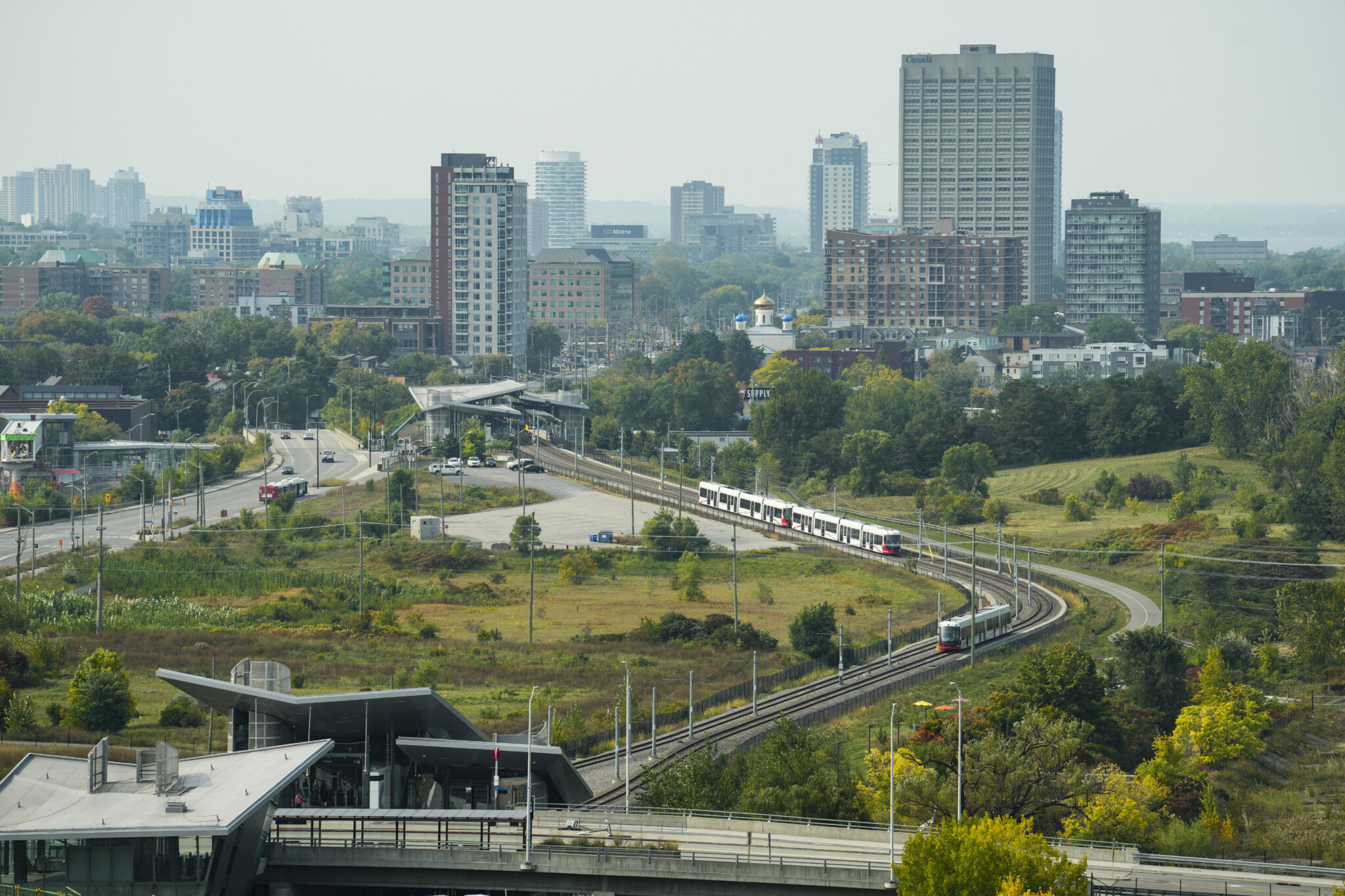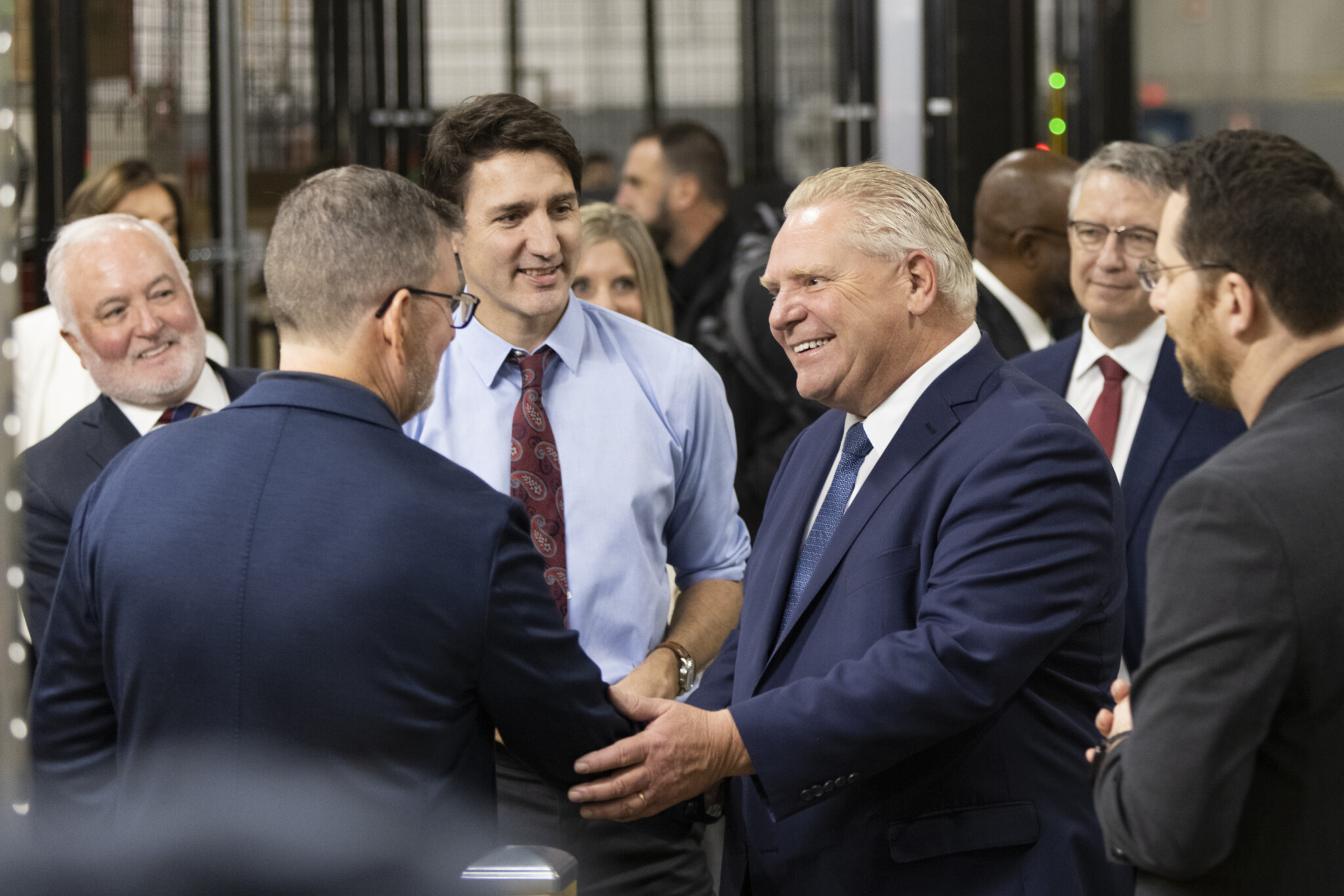Beneath the tranquil veneer of Canada’s pristine landscapes and polite society lurks a troubling reality. A silent decay gnaws at the foundations of our institutions—a “soft corruption” that, while invisible to the untrained eye, is slowly eroding the foundations of our prosperity. This isn’t the headline-grabbing bribery or scandalous embezzlement you might expect; it’s more insidious, woven deep into the bureaucratic tapestry we trusted to serve us. It’s a corruption that dons the mask of procedure, cloaked in legality, yet it siphons resources away from the people and into the pockets of self-selected, well-connected insiders.
Consider Toronto’s recent announcement of the West Toronto Railpath extension—a modest 2.1-kilometer bike and pedestrian trail along a Metrolinx-owned rail corridor. The projected cost? A jaw-dropping $149 million. That’s $71 million per kilometre, or $71,000 per metre.
To put this absurdity into perspective: you could hire a skilled construction worker for every single metre of the path, pay each one an above-average salary for a full year, and you’d still not burn through it.
You could literally line the stretch hood-to-trunk with newly purchased Range Rovers and still not spend it. Unless we’re talking about installing gold-plated pavement and diamond-studded railings, it’s hard to fathom how a simple bike path could rack up such a bill. When costs are this wildly out of sync with reality, it’s not just eyebrow-raising—it screams for scrutiny.
When questioned about this astronomical figure, Toronto’s Mayor Olivia Chow suggested that federal funding implied due diligence had been done, despite the city covering over 80 percent of the bill; a bill, astonishingly, quoted by the provincial government.
Every level of government, and the entire mainstream political spectrum, Conservative, Liberal, and New Democrat, is complicit in this outrageous outcome.
It should come as no surprise then, that populist movements are on the rise while broader political participation continues to slide as the mainstream fails to deliver.
A spiraling “cost problem” is derailing the nation
Then there’s Toronto’s Eglinton Crosstown LRT, a 19-kilometre light rail line initially budgeted at $5.3 billion and slated to open in 2020. As of now, it remains unfinished—years overdue and billions over budget, with estimates suggesting costs could exceed $12.5 billion. What was once hailed as a groundbreaking public-private partnership has become a masterclass in pointing the finger and lighting taxpayer dollars on fire. Accountability has been so diluted that no one seems responsible for the delays and overruns. It’s like a group project where everyone gets an F, but nobody knows who didn’t pull their weight.
Meanwhile, the proposed Ontario Line—a 15.6-kilometre subway route—was initially estimated at $10.9 billion but could cost over $20 billion, nearly doubling the original budget and reaching over $1 billion per kilometre—one of the highest price tags globally. Astonishingly, nearly half of this line will run above ground along existing rights-of-way, which should reduce costs. Contrast this with Paris’s Line 14 extension, a largely underground metro line of longer length built for the 2024 Olympics which cost €3.5 billion–about $5.3 billion in Canadian dollars, equating to less than a quarter of the cost per kilometre compared with the Ontario Line.
This problem isn’t unique to Toronto. From coast to coast, Canada’s infrastructure projects are trapped in a vicious cycle where costs skyrocket and scopes shrink—a phenomenon turning grand visions into expensive mirages. Calgary’s Green Line LRT, initially a bold 46-kilometrer venture estimated at $4.5 billion, has been whittled down to just 20 kilometres while the budget could swell to over $5.5 billion. That’s paying more for less, quite literally.
In Montreal, the contrast between the original REM project and the canceled REM de l’Est highlights the cost spiral. The original elevated REM, a 67-kilometre network opened in 2023, was built at approximately $6.9 billion—about $100 million per kilometre. In stark contrast, the REM de l’Est, planned at 32 kilometres, was estimated at over $10 billion—more than $312 million per kilometre. Ultimately, it was canceled when costs ballooned to over $36 billion, leaving sunk costs and dashed hopes.
Vancouver’s Surrey-Langley SkyTrain extension saw its price tag leap from $4 billion to $6 billion—a 50 percent increase—and its opening date was delayed by a year without significant scope expansion.
This relentless spiral of escalating costs and diminishing returns isn’t just an unfortunate series of local mishaps; it’s a national crisis buffeted by a culture of “soft corruption” that has become endemic. If left unchecked, it threatens to cripple Canada’s long-term ability to build the essential public infrastructure that underpins economic growth and public well-being, turning us into a country that can’t afford to build its own future.

A couple holds hands as they walk along the West Toronto Railpath, May 23, 2021. Tijana Martin/The Canadian Press.
The rise of “process parasites”
How did we get here? The rise of “process parasites”—consultants, lawyers, planners, and other paid stakeholders—has embedded unnecessary complexity into every stage of building just about anything. They’ve turned nice-to-have activities into legal necessities, often influencing regulations to mandate their involvement. Cozy relationships with procurement departments lead to unscrutinized deals at unreasonable costs. While overt corruption may be rare, the system is engineered to justify waste as the “cost of doing business,” enriching connected insiders.
Few sectors are more burdened by this “cottage industry tax” than in housing. An Altus Group report reveals that in the Greater Toronto Area, every city takes over a year to approve new housing projects, with the fastest averaging 13 months. Developers face dozens of report requirements that vary by municipality. In Caledon, getting approval to build multi-family housing demands over two years and nearly 100 different reports—from heritage impact assessments to frivolous sun and shadow studies. These obligations keep consultants employed but add little value, escalating costs amid a housing crisis.
In Toronto, approvals take an average of 25 months, adding six figures to the cost of each housing unit due. Add on the fact that cities in the Greater Toronto Area now charge over $100,000 dollars per unit in direct development charges and it becomes clear that wasteful government and process parasites have undoubtedly inflated housing costs, cashing in on the next generation’s stolen dreams.
Consider that obtaining a construction permit in Canada takes an average of 249 days, compared to just 64 days in Denmark. Far from being a hallmark of sophistication, our drawn-out procedures are a symptom of systemic malaise, reinforcing our national decline in economic development.
Buttering buns and greasing palms
Ironically, the labyrinth of red tape has become a breeding ground for soft corruption rather than a safeguard against it. Decisions are made behind closed doors, inefficiencies flourish, and regulations touted as “accountability measures” create a maze where oversight is nearly impossible. This convoluted system doesn’t just hide unethical practices, it normalizes them, allowing inflated costs from opaque processes and relationship-based procurement to be dismissed as normal.
Nowhere in Canada do political connections appear to yield more tangible benefits than in Ontario under Premier Doug Ford’s leadership. The redevelopment of Ontario Place exemplifies this: the province plans to partner with Austria’s Therme Group to build a massive spa on public land, but refused to publish alternate bids. Critics argue the opaque deal will cost Ontario significantly in expenses—such as funding an $800 million parking lot—and lost valuable land. Projected visitor numbers surpassing major attractions like the CN Tower or Canada’s Wonderland are seen as unrealistic. The involvement of consulting firms with government ties raises further questions about whether they’re profiting more from connections than actual expertise.
But that’s just scratching the surface. The hasty decision to close the Ontario Science Centre, ignoring private offers to fund repairs and opting to spend over twice as much to move it, is more than questionable. How is it that the same developer repeatedly benefits from ministerial decisions? From the $8.3 billion Greenbelt controversy to the suboptimal re-alignment of the Yonge North subway extension to the quiet sale of “surplus” government land like in the controversial Dominion Foundry, the pattern is hard to ignore. The exclusive deal with Staples for Ontario Service Centres—why not open it to other businesses? And the announcement of a fanciful 50-kilometre tunnel under Highway 401, likely to generate millions in consultant fees despite its near-impossible feasibility, should raise eyebrows. It’s not just these decisions that are alarming—it’s the brazen audacity, daring us to overlook what’s happening in plain sight.

The OC Transpo Light Rail Transit (LRT ) project is pictured in Ottawa on Monday, Sept. 25, 2023. Sean Kilpatrick/The Canadian Press.
Is it industrial policy, or just handouts?
Soft corruption isn’t confined to infrastructure and housing. Governments at all levels have indulged in questionable industrial policy, dishing out subsidies and sole-source contracts with a lack of transparency that would make even the most seasoned lobbyist blush.
Take the federal and Quebec provincial government’s recent $2.54 billion loan to Telesat, a Quebec-based satellite internet provider aiming to compete with SpaceX’s Starlink. Despite a market valuation of around $900 million and declining revenues of around $550 million, Telesat received generous loan conditions to build a new satellite constellation. The provincial government boasted about creating 1,000 new jobs, which, when you do the math, amounts to over $2.5 million per job. That’s quite the deal if we’re minting millionaires, but private investors were notably absent, raising questions about the project’s financial risks and the government’s due diligence—or lack thereof.
Similarly, over $50 billion has been promised to Canada’s electric vehicle sector in the next decade. While aiming to be a future economic player is commendable, there’s skepticism about whether these investments will actually pay off or become another costly lesson in state-led industrial policy.
Lavishing the world’s largest corporations with taxpayer money in hopes of securing their loyalty is like trying to keep a cat from roaming by offering it cream—it’ll enjoy the treat, but eventually wander off anyway. This isn’t savvy economic planning, it’s soft corruption. Disloyal companies orchestrate scenarios where countries are pitted against each other in a corporate welfare race. It’s a fool’s errand—a bridge we shouldn’t jump off just because our allies are leaping.
All these misallocated funds add up. Every Canadian dollar spent inefficiently on politically favoured companies and industries is a dollar not available for actual public goods—infrastructure, clean energy, education, health care, defence, and so on. The excessive overhead and inflated project costs mean we get less bang for our buck, leaving us with a quality of life that lags behind other countries with similar wealth.
Peace, order, and good government
So, how do we break free from this quagmire of soft corruption? The solution isn’t simply cutting red tape or slashing budgets. It requires a fundamental reevaluation of how public and private projects are planned, approved, executed, and audited.
It’s high time Canada launched a public inquiry into government procurement practices at all levels. Let’s shine a spotlight on where taxpayer dollars are vanishing, expose inefficiencies, and—crucially—propose actionable changes to fix these systems. To really turn the tide, we must rebuild state capacity by investing in public sector expertise to reduce reliance on costly third parties for recurring activities. Cultivating in-house talent cuts unnecessary expenses and ensures long-term access to expertise. Transparency is essential; public projects should undergo rigorous, independent audits accessible to all, deterring cost inflations and inefficiencies.
Investing in high-quality public goods—state-of-the-art infrastructure, clean energy, and a talented workforce—is the industrial policy we ought to prioritize. This prevents rent-seeking behaviour and stops private entities from exploiting government connections. Focusing on broadly beneficial public goods and clear processes reduces risks to all investments, leading to a more competitive private sector empowered to pursue genuine innovation.
Canada’s soft corruption isn’t about a few bad apples; it’s a system that inadvertently rewards inefficiency and opacity. By acknowledging this and taking action, we can restore faith in public institutions and ensure taxpayer dollars are spent wisely. In a rapidly changing global economy, Canada cannot afford wasteful public spending habits paired with complex processes that reward captured insiders, threatening to force us into deindustrialization. By reinforcing state capacity, demanding transparency, and investing in high-quality public goods, we can pave the way for a more prosperous future.











